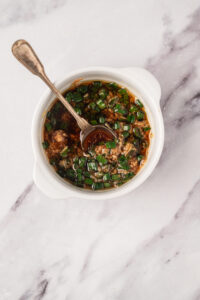Make a restaurant-quality Chinese favorite at home with this fast and easy recipe!
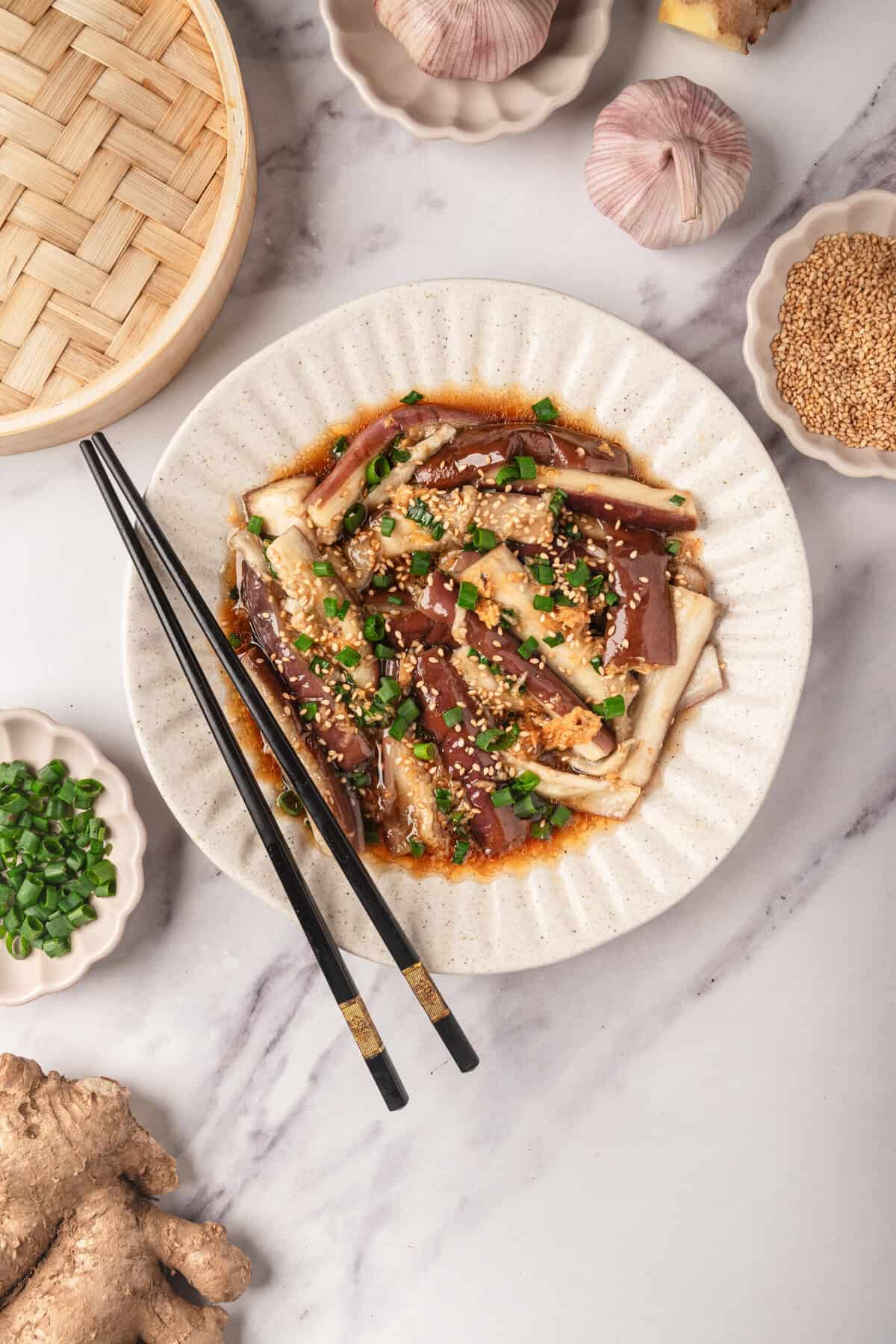
One of my all-time favorite vegetable dishes at Chinese restaurants is steamed eggplant. It’s typically served in a deliciously sweet, tangy, silky sauce with the perfect hint of salt. I’m often torn between this dish and baby bok choy—so I usually end up getting both. I frequently make bok choy at home, but it wasn’t until recently that I started making this eggplant dish regularly, too.
My go-tos for these beautifully purple veggies are dishes like eggplant Parmesan—which I make with almond flour and bake in the oven for a healthier alternative to the traditional fried version. However, after seeing a nice supply of Chinese eggplants at the store, I figured it was time to expand my repertoire.
My first attempt involved sautéing the eggplant in a non-stick skillet with olive oil. I added the sauce to the pan to thicken it a bit. The dish was great, but the texture was a bit different. That’s when I realized that the dish I got at the restaurant features steamed—not sautéed—eggplant. Lightbulb moment! Steaming creates melt-in-your-mouth tenderness that is utterly irresistible. That’s not to say I won’t occasionally sauté an eggplant, but steaming has its merits, and believe me, it’s worth it! Just try this recipe, and you’ll see what I mean.
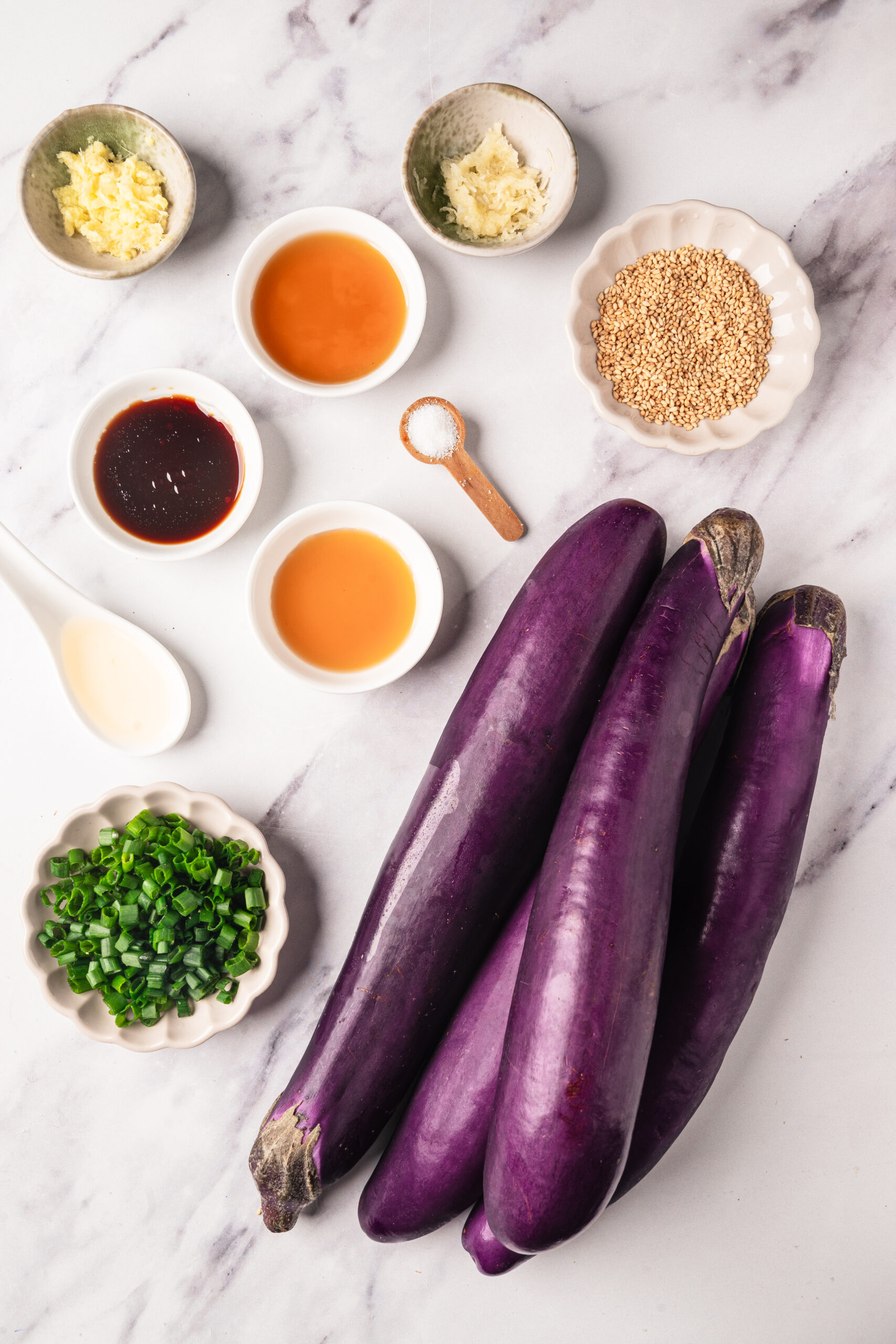
Is Steamed Eggplant Healthy?
Steamed eggplant is a healthy option to serve as part of an overall well-rounded diet. It is low in calories while providing some dietary fiber and essential nutrients. To reduce the salt level in this dish, use low-sodium soy sauce. You can make the recipe gluten-free by substituting gluten-free soy sauce, coconut aminos, or tamari. Additionally, coconut sugar, honey, maple syrup, date syrup, or your preferred keto sweetener can be used as a substitute for the sugar in this recipe.
What Is The Difference Between Chinese And Japanese Eggplant?
Although Chinese and Japanese eggplants are often interchangeable in most recipes, there are some subtle differences between the varieties. Japanese eggplants have slightly thicker skins, and their color is darker purple than that of the lighter, thinner-skinned Chinese eggplants. The flesh of a Chinese eggplant is nearly as white as a sheet of notebook paper, while Japanese eggplant flesh appears cream colored. Both varieties are bred to have fewer seeds and less bitterness than Western varieties.
Japanese eggplants cook more quickly and come out more tender than Chinese eggplants, which retain their firmer, sometimes stringy texture. Both varieties are ideal for grilling, braising, and stir-frying. Japanese eggplant is also suitable for tempura frying. If a recipe calls for either Japanese or Chinese eggplant, you can use them interchangeably, depending on which variety you find at the grocery store.
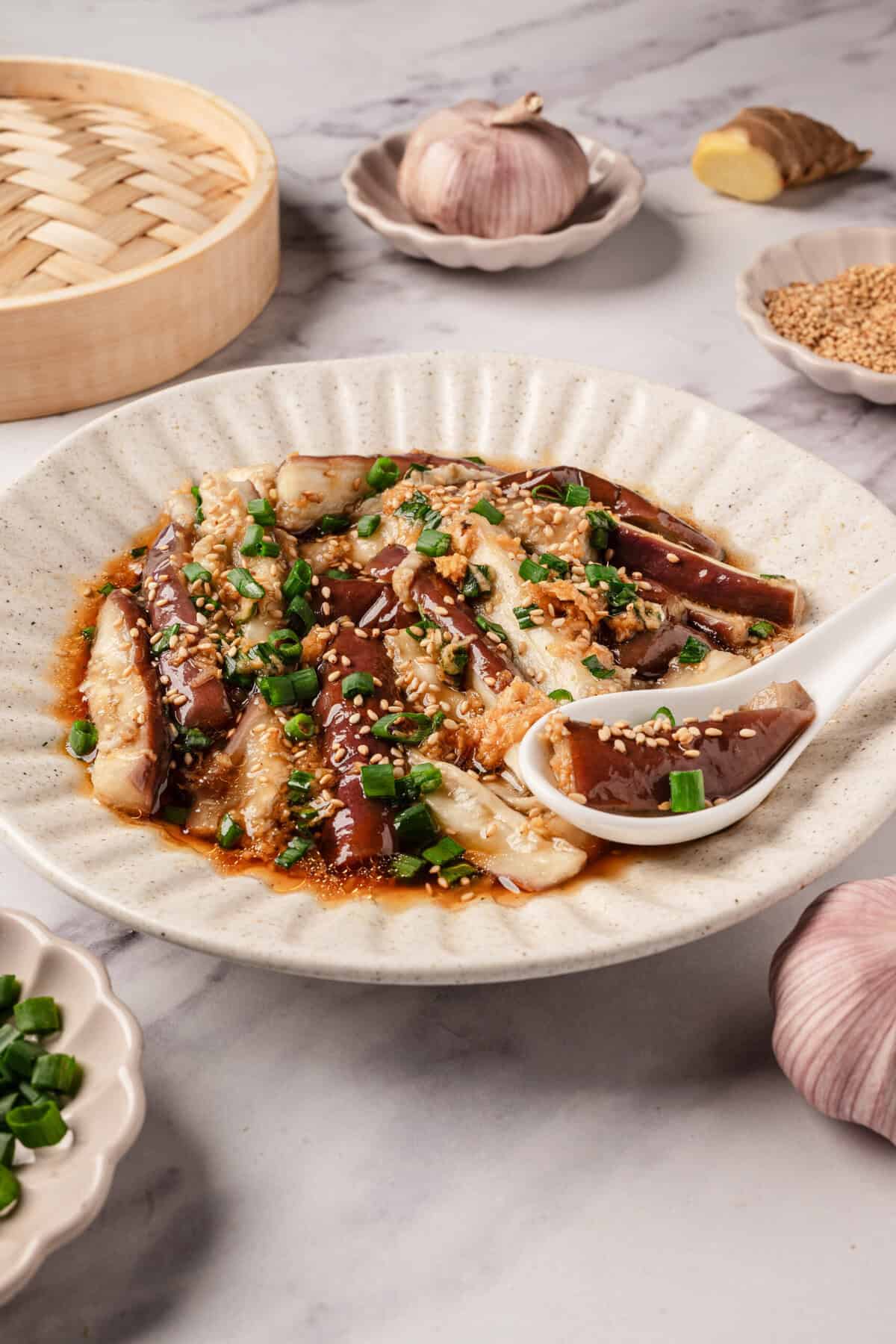
FAQs & Tips
Although this dish is best enjoyed right away, you can store leftovers for later use. Allow leftovers to cool to room temperature before refrigerating them in an airtight container for up to 4 days. Reheat gently on the stove, in the oven, or in the microwave. This dish does not freeze well.
No, you don’t need to peel the eggplant, no matter which of the two Asian varieties you’re using. Steaming helps to tenderize the skins. There’s also no need to soak the eggplant to prevent it from turning brown, so long as you place it directly into the steamer after slicing. If you are not ready to steam the eggplant after cutting it, you will need to soak it in a solution of two cups of water and two tablespoons of an acid, like lemon or lime juice, apple cider vinegar, or another light-colored vinegar.
No, this dish does not require salting and blotting the eggplant dry, as is often done when using American eggplant in many dishes.
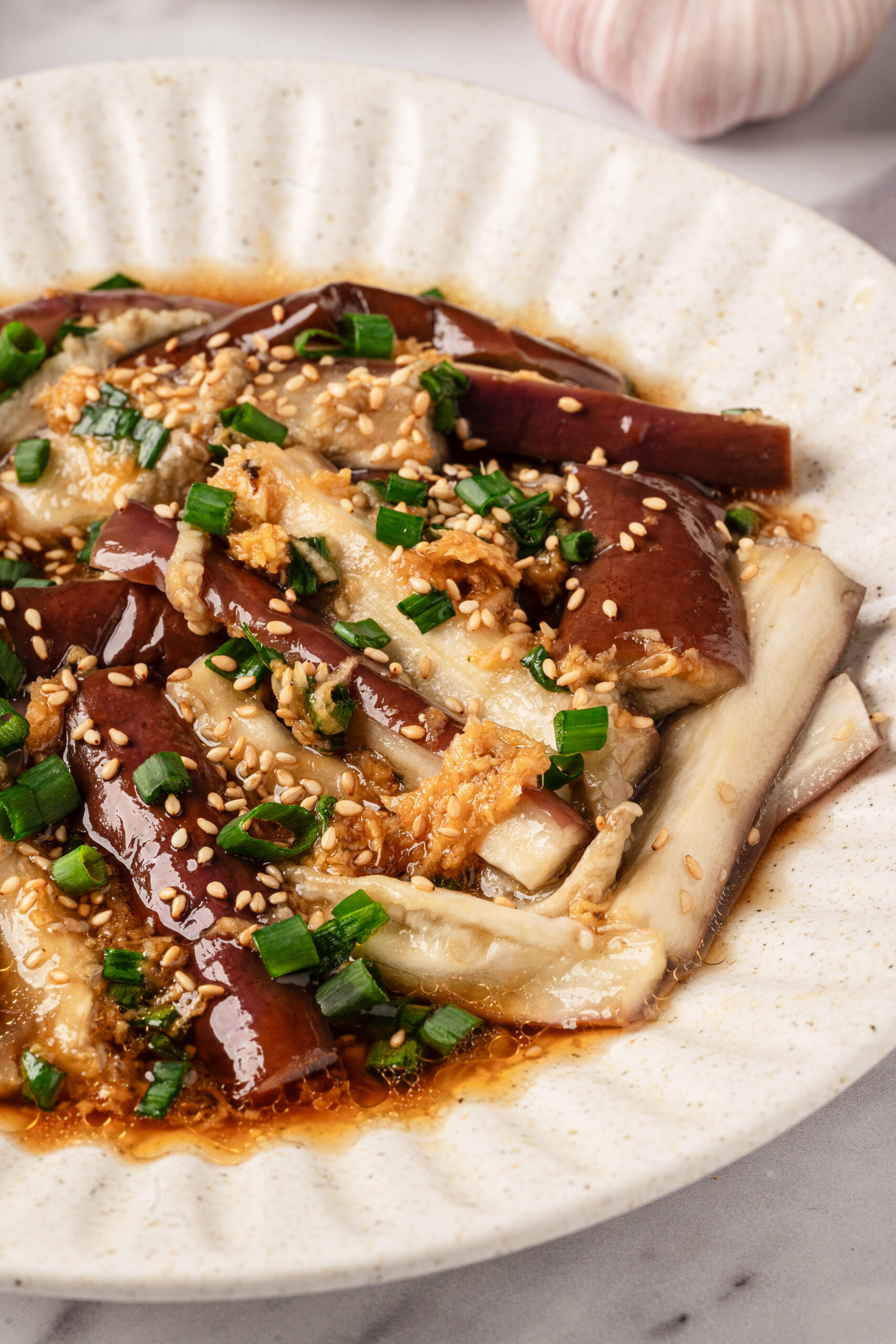
Serving Suggestions
Skip the takeout and plan a full Chinese spread at home featuring this steamed eggplant recipe paired with Crispy Air-Fryer Egg Rolls, Hot And Sour Soup, Egg Foo Young, Chicken Fried Rice, Beef Stir-Fry, and Sesame Noodles. These Almond Flour Sugar Cookies are a nice spin on traditional Chinese almond cookies and are the perfect light treat for dessert. With a feast like this, your local restaurant may wonder what happened to you!
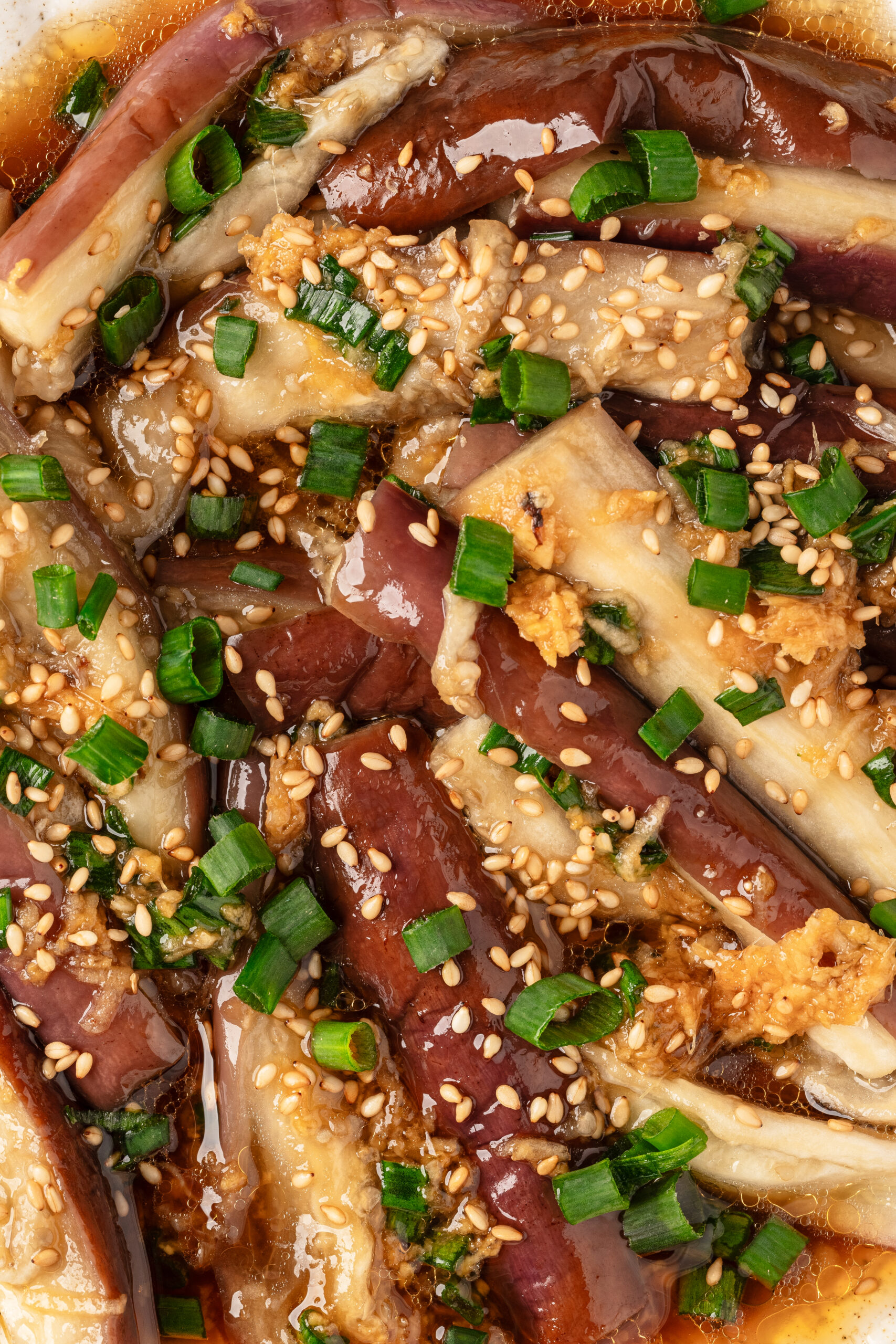

Steamed Eggplant
Ingredients
- 1 1/4 pounds Chinese eggplant about 4 medium, washed and trimmed
- 1 tablespoon soy sauce
- 2 teaspoons oyster sauce
- 1/2 teaspoon sugar
- 1 tablespoon toasted sesame oil
- 2 garlic cloves minced
- 1 teaspoon grated ginger
- 1 scallion chopped (divided for dressing and garnish)
- 2 1/2 teaspoons rice vinegar
- Toasted sesame seeds for garnish (optional)
Instructions
-
Cut eggplant into strips for even cooking by slicing it into three logs, then halving each log lengthwise.
-
Line a steamer basket with parchment paper. Arrange the eggplant pieces in a single layer. Steam over boiling water for approximately 10 to 15 minutes, or until they reach your desired tenderness.

-
In a bowl, mix together the soy sauce, oyster sauce, sugar, toasted sesame oil, minced garlic, ginger, half of the chopped scallions, and rice vinegar.

-
Toss the steamed eggplant in the sauce. Garnish with additional scallions and sesame seeds if desired. Serve warm.

Nutrition
The post Steamed Eggplant appeared first on Food Faith Fitness.


